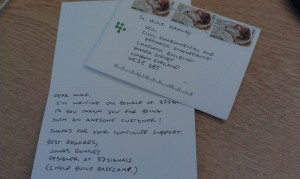The value of “analog” user experience
I’ve been using 37Signals’ Basecamp now for over 5 years. I’m involved in many projects with people from multiple departments and organisations. In the first large project that I run in 2007 – Mapping Change for Sustainable Communities – Basecamp was recommended to us by Nick Black (just before he co-founded CloudMade), so we’ve started using it. Since then, it was used for 33 projects and activities which range from coordinating writing an academic paper to running a large multidisciplinary group. In some projects it was used a lot in other it didn’t work as well. As with any other information system, the use of it depends on needs and habits of different users and not only on the tool itself.
It is generally an excellent tool to organise messages, information and documents about projects and activities and act well as a repository of project related information – but project management software is not what this post is about.
I’m sure that in the scheme of things, we are a fairly small users of Basecamp. Therefore, I was somewhat surprised to receive a card from 37Signals. 
I’m fairly passive user of Basecamp as far as 37Signals are concerned – I’m please with what it does, but I have not contacted them with requests or anything like that. So getting this hand-written card was a very nice touch from a company that could very easily wrote the code to send me an email with the same information – but that wouldn’t be the same in terms of emotional impact.
As Sherry Turkle is noting in her recent book, the human contact is valuable and appreciated. This is important and lots of times undervalued aspect of communication and interaction – the analog channels are there and can be very effective. This blog post – and praising 37Signals for making this small effort, is an example of why it is worth doing it.
